Data Overview:
The first source I had upon receiving my class year was the alumni record, edited by George L. Reed. From this source, I gathered that in the class of 1858, there are 110 total students, 35 of which successfully obtained a bachelors degree. 110 is a lot of students to study, so I will most likely focus on the 35 graduates, who I have more information about anyways. However, for this exercise, I collected and organized data on every student, as I wanted to get a sense of who the class of 1858 was.
At first, trying to get all the information out of the alumni record for 110 students seemed daunting- there were way too many tiny words in that packet. However, once I began to read through each student’s record, I easily began to develop a sense of the type of information provided- namely, birth and death dates, place of origin, occupation, family information (occasionally), and campus affiliations. Therefore, it was pretty easy to decide how I would categorize and organize the information on an Excel spreadsheet. As I will be focusing more on the graduates than the entire student body in later research, I created two spreadsheets- one of all students, and one of the graduates only. This way, I can choose how closely I want to focus on the information I obtain from the alumni record.
The first category I created in the spreadsheet was place of origin. Of all of the students in the class of 1858, the record was able to find and report the place of origin from 91.8% of the students. From the information gathered, I created the following chart:
As can be seen from the pie chart, a very large majority of the students were from close by. Interestingly enough, one of the students in the “Other” category originated from the West Indies. I would assume that he comes from a family of major plantation owners, considering that most of the natives of the Bahamas were enslaved by white Americans and thus would not attend an institution of higher education. It still may be interesting to look into his life and see if I can glean any information about 19th century life in the Caribbean.
The second category I created was occupation. It is important to note that the record reported the occupations of only 60% of the members of the class, so it is not a perfectly complete description. After reading through the occupations, I chose to generalize each specific job into one of seven categories: law, education, religion, business, politics, military, and other, for a few jobs that did not fit into these major categories. This was because I did not want to overwhelm myself with unnecessarily specific information. The point of this exercise is to create a general sense of who these people were, not to write 110 biographies. From this information, I created another chart:
I chose not to include the 40% unknown occupations, as that would consume the entire chart and take away from my ability to comprehend the information that I do have. I will also note that there were many mixtures of occupations per person, as a person obviously does not always do the same thing his whole life. I recorded this in my spreadsheet by listing each category and separating them with a slash. My goal is not yet to understand the specific chronology of each student’s life, but to gain a sense of the types of careers these students went in to.
However, in listing each occupation category for each student, what captured my attention was the occupational mobility these men had. Many were involved in religion, education, politics, law, and business in some manner throughout their lives. I would be interested in looking into the educational structure of Dickinson College at this time to see what these men were studying to give them so many opportunities. Did they even have majors at this time? Were students able to pick and choose classes for their schedules? These are some question I may pursue in future research.
The last category I created was campus affiliation. The alumni record, reported the affiliations of 73% of the class, and the results are complied below:
Clearly, with 73% of the class year involved in at least one, but usually two, campus organizations, I would have a lot of material to look at if I choose to research student life. I would be especially interested in examining the fraternities to take a look at masculinity structures and male gender roles, as that is a topic that has always interested me.
Other Reference:
My first candidate for the external reference aspect of the assignment was Daniel Mountjoy Cloud, as he served as a captain in the secret service of the Confederacy, which seems interesting.
I first searched for him on the Dickinson Archives and got multiple results. The first, a short biography, gave me a good summary of his life. Interestingly enough, I found that while in the Confederate secret service, he actually worked with fellow Dickinsonian Thomas Conrad in a plot to kill Abraham Lincoln. I had head about Conrad’s involvement in that plot a few times before, but I had no idea that an individual from my own assigned class year was also an integral part of the planning.
Cloud was also in another search result in the Dickinson Archives entitled “Students Bury Book.” I must admit I was intrigued. The link led me to a journal entry from another one of the students in my class year, Horatio Collins King (discussed further below). In the entry, King describes an event in which students stole an apparently widely-hated book from a professor and buried it. I suppose mid-19th century college students lacked the many methods of entertainment-or outlets of frustration, depending on how you look at it-that we are lucky to have today. In all seriousness, I really enjoyed reading this small anecdote into student life, and will definitely be looking into the journal of Horatio Collins King in later research.
To continue my research on Daniel Cloud, I moved to Wikipedia. When I typed in his name, an article for Thomas Nelson Conrad appeared just as it did in Dickinson Archives. I learned that when Conrad went to Washington to discuss plans to kill Lincoln, Cloud accompanied him, and that the two were actually college roommates and fraternity brothers. Beyond that, there was no information about Cloud in Conrad’s entry. I moved my search after this to Google Books, and although I found a few secondary sources that mentioned Cloud, I could not find another reference source. In terms of this part of my research, I’ve reached a bit of a dead end, but I do have secondary and primary sources to look in to later on if I so choose.
A second student that I researched, Jennings M.C. Hulsey, was killed at the Battle of Bull Run according to the alumni record, which I found intriguing. I found him on Dickinson Archives and learned that he fought in a Confederate unit that “saw some of the heaviest fighting,” and, arguably more importantly, that he was quite the prankster. The reference specifically relates an incident in which he tarred a professor’s blackboards and was temporarily suspended from the college. It seems like a major part of my class year’s day-to-day affairs involved a lot of pranks; it would definitely be fun and interesting to center my project around that idea, if there was enough information on it.
On Google Books, I found him in a 1900 register of his fraternity, Phi Kappa Sigma. Although this document was made less than half a century after his death, and it could certainly be argued that it is a primary and not a reference source, it does have the potential purpose of a gateway into further research. As this was the purpose that it served me, for this assignment I am considering it a reference source. I didn’t gain any new information from the register, but I found an awesome picture of Hulsey’s chapter, which presumably includes Hulsey, although there is no way to tell who is who.
I tried figuring out which one was Hulsey by comparing it to the other picture of him from the Dickinson Archives, but I couldn’t make a definite conclusion. It is also possible that this picture was taken when the register was written, which would mean Hulsey would have been dead for a few decades and certainly would not have been in the picture. Either way, it’s a cool picture, and it’s nice to know that fraternities leave behind so many documents and pictures of their members.
After looking into the project that a previous student already made about Horatio Collins King, as well as personally reading his journal entry about burying the abominable book, I knew I had to look into him. There were a LOT of search results from him on the Dickinson Archives site (11 pages to be specific), but as I am currently just looking for reference sources, I focused on the short biography the archives provided. King was involved in many things throughout his life- he wrote and edited books and newspapers, he fought in the Union Army and received a Congressional Medal of Honor, he ran for congress and other political positions, and most importantly, he wrote a lot of songs.
Reference information of King can also be found on his Wikipedia page, which interestingly writes that he took a stance against anti-Chinese sentiment during his time as a judge-advocate-general in New York. I also found more reference sources of him on Google Books, including the 1917 edition of Who’s Who in New York as well as the Biographical Directory of the State of New York 1900, but these sources did not give me any information that I had not learned from Wikipedia or the Dickinson Archives. It seems that historical research-especially when you are only researching references-is a lot of reading the same information 50 times in a row and hoping for one minute detail you haven’t come across yet.
The last person I searched for was Joshua Allan Lippincott. He was the president of the University of Kansas, so I thought he would be relevant enough to have a few sources written about him.
As always, I searched the Dickinson Archives first and found, as always, a short bio. Based on this source he seems like a pretty unpleasant person. (He may or may not have had an illegitimate child and is explicitly described as “dour, pious, and grim.”) However, this is about research, and not morality, so I put that aside and looked at the facts. I read that he was a chief adviser for the Carlisle Indian School. I had learned about the school last year during my American History class, so I was immediately intrigued.
Next, I searched for Lippincott on Wikipedia, finding an article, but it was actually seriously lacking in information in comparison with the Dickinson Archives reference. Perhaps if I do choose to research this man more in depth, I could make some contributions to the page. On Google Books, I found a geneology of his family, which although counts as a reference source in my mind, as it contains brief bits of information that I could then use to further my research elsewhere, it did not provide me with any new information about Lippincott. I also found a short biography on him in the National Cyclopedia of American Biography, but there was no mention of the Carlisle Indian School, which was what I was most interested in. I continued to search, but only found primary sources concerning his relationship with the Carlisle Indian School. However, I am very excited about this find, and will definitely be looking into it more deeply when we analyze primary source documents.
Census Records:
The census records search was probably the least exciting part of my research for this assignment. Although it is always fun to be able to look at a document that was actually written a century and a half ago, census documents can be pretty dull, especially when you are reading 15 of them, one after the other. I researched 3 individuals: Horatio Collins King, Joseph Emory Broadwater (who I did look into in other references, but didn’t mention here due to a lack of significant results) and Joshua Lippincott.
King was fairly easy to find, as I knew his place and date of birth as well as the names of his parents, children, and wives. Screenshots of three records from his life can be seen below:
- Collins at age 42 Courtesy of Ancestry.com
- Collins at age 62 Courtesy of Ancestry.com
- Collins at age 72 Courtesy of Ancestry.com
Interestingly enough, in the last census taken, while King was at the age of 72, the census taker misspelled his name and wrote Horgler instead of Horatio. This was much funnier to me while in the throes of research insanity after staring at census records for the past 5 hours. However, it also shows how important it is to pay close attention, as if I had not noticed that every other piece of information was correct, I would not have noticed that record.
Joseph Emory Broadwater didn’t have any funny spelling errors and was fairly easy to find census record on.
- Broadwater Census Record at age 13 Courtesy of Ancestry.com
- Broadwater Census Record at age 32 Courtesy of Ancestry.com
- Broadwater Census Record at age 43 Courtesy of Ancestry.com
There is no mention of a son named Wharton in other record or references, so I’m not sure if that is a typo or a boy living with the Broadwaters who was mistaken for a family member, but it could use some further investigation.
Joshua Lippincott was difficult to find records on, and I’m still not even sure that the second one is actually him.
- Lippincott census record at age 15 Courtesy of Ancestry.com
- Lippincott census record at age 45 Courtesy of Ancestry.com
In the second record shown, every single fact lines up perfectly with the Lippincott from the class of 1858. His occupation, his name, his age, and his location all make sense. However, the Dickinson Archives reference stated that there was no record of Lippincott marrying and having children (other than the possible illegitimate child). It is possible that Lippincott had random people living in his house and the census taker assumed they were his family, or maybe Lippincott was married all along and his family simply does not exist according to Dickinson College. Maybe Lippincott had a twin who did the exact same thing he did, but ended up marrying and having a family. Either way, I am certainly intrigued.
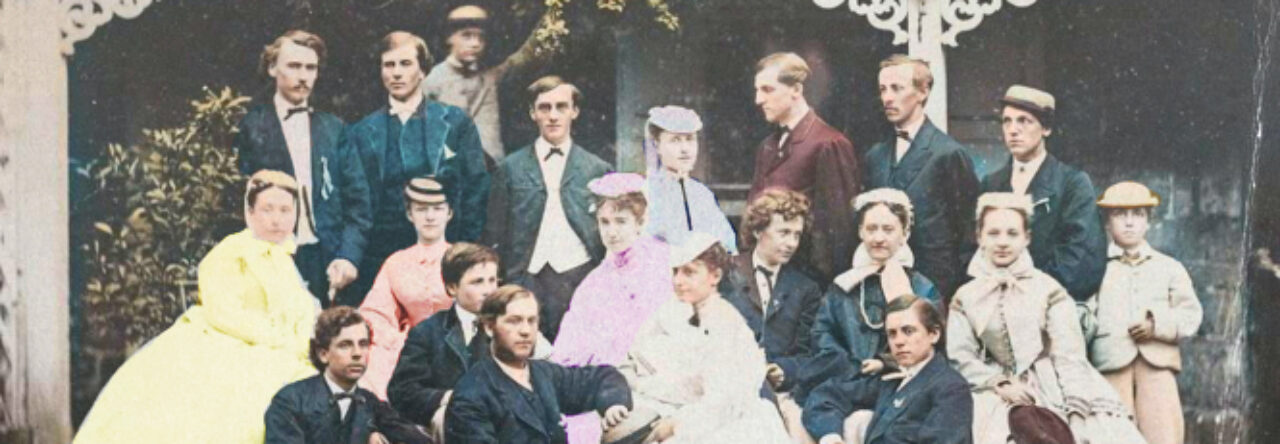




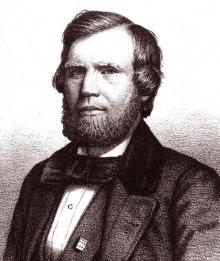
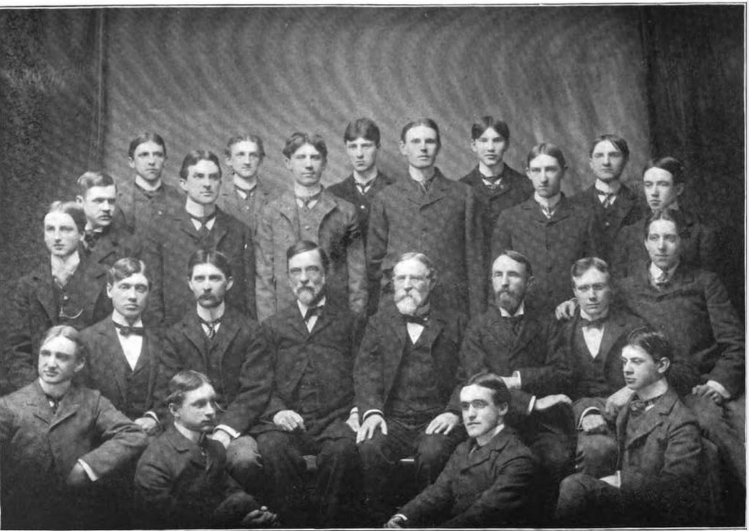



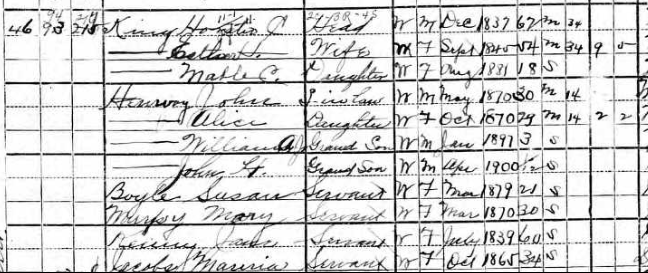


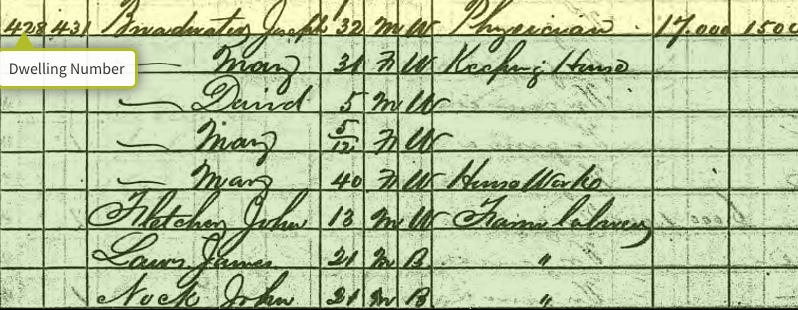



Leave a Reply